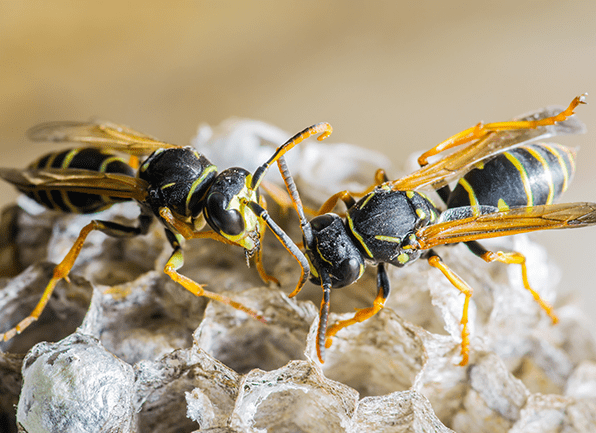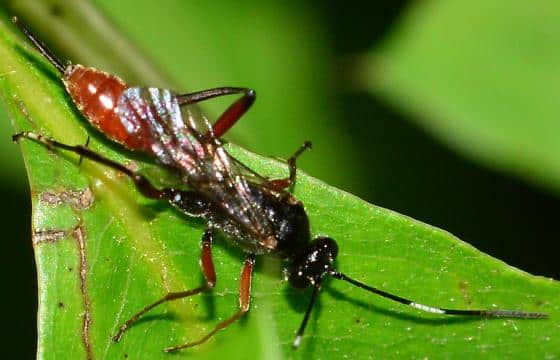Wasp Identification
The appearance of a wasp depends greatly on its specific species; however, most are black or metallic with yellow or brown markings. In general, wasps have two pairs of wings and a waist that is pinched in. Their size is also species dependent but many adults range in length from 5/8th to 3/4th of an inch.
Almost half a million people each year are sent to the emergency room with allergies to stinging and biting pests. Most stinging insects are more active in the summer and fall, when they are out looking for food sources to get them through the winter ahead.
Paper Wasp
The Paper Wasp is a slender, narrow-bodied insect with long legs. They are reddish-orange to dark-brown or black in color and have yellow markings on their abdomen. Their paper nest is umbrella-shaped and has hexagonal cells that are left open and visible. Paper Wasp nests can often be found along eaves, window frames, porch ceilings, rafters, etc.

Biology and Behavior
Braconid Wasp
Braconid Wasps are tiny wasps that might be mistaken for flies were it not for the alarm colors and the female’s long ovipositor. Her needle-like ovipositor looks like a long stinger, but it is not. It is a tube used to deposit eggs. They have black heads and red bodies. Long black wings fold over each other and cover the length of the abdomen when walking. Long legs and antennae are also black.
